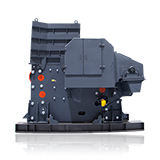How to Design an Efficient Material Processing Line?
In the design and configuration of a material processing production line, several critical factors must be carefully evaluated to ensure optimal performance, cost-effectiveness, and product quality. These factors include the characteristics of the raw materials, desired product specifications, production capacity, and the form of the production line itself. Proper coordination of these elements is essential to achieve efficient crushing, screening, and conveying operations tailored to specific project requirements.

Key Factors Affecting Production Line Design
1. Raw Material Characteristics
- Hardness: The hardness of the raw material directly influences the selection of the crusher type. Harder materials typically require more robust crushing equipment.
- Density: The density of the material affects the actual throughput of the production line and must be considered when estimating capacity.
2. Raw Material Size
- Maximum Size: The largest dimension of the raw material determines the model and capacity of the primary crusher.
- Size Distribution: The distribution of particle sizes impacts the overall efficiency of the production line, influencing crusher performance and screening requirements.
3. Product Size
- Maximum Product Size: The maximum size of the finished product dictates the choice of the final stage crusher and the number of crushing stages.
- Product Size Distribution: The range of product sizes affects equipment selection and the complexity of the crushing process.
4. Production Capacity
Production capacity is the foundational parameter in production line design. The number of crushing stages and the models of equipment chosen are primarily based on the required throughput.
It is important to note that these four factors may sometimes conflict. In such cases, production capacity should be the primary reference point for decision-making.
Stone Production Line Types
- Mobile Crushing Lines: These include tire-mounted or crawler-mounted mobile stations, providing flexibility and mobility.
- Fixed Crushing Lines: These are constructed on steel frame foundations or concrete bases, offering stability and long-term operation.
The type of production line selected influences equipment choice and the calculation of conveyor belt lengths.

Practical Guidelines for Production Line Configuration
1. Matching Crusher Capacity with Production Requirements:
For example, if a client requests a 300 t/h jaw crusher to handle large feed sizes but only requires 100 t/h production, it is advisable to analyze input-output efficiency and recommend cost-effective alternatives. Pre-treatment methods such as blasting or hydraulic hammering to reduce feed size below 500 mm can allow the use of smaller crushers (e.g., PE600x900 jaw crusher suitable for 100 t/h with 500 mm feed size). However, if the client insists on the larger crusher, subsequent equipment selection and stockpile management must be carefully planned.
2. Crusher Type Selection Based on Material and Application:
Generally, cone crushers are suitable for hard materials, while impact crushers are used for medium-hard to soft materials. This is not absolute and depends on shaping requirements and operational preferences. For instance, in regions like Ethiopia and Kenya, impact crushers are commonly used for weathered basalt, whereas harder basalt or companies focusing on spare parts replacement might prefer cone crushers. For granite with high shape requirements but high sand-making costs, a combined cone and impact crusher setup is often employed. Limestone requiring large-size output (40-90 mm) with a high proportion of fines may necessitate cone crushers.
3. Screening Requirements and Product Variety:
Most clients require 3-4 product sizes, which can be met with 1-2 screens. For 5-6 product sizes, additional screens increase costs. When clients request multiple product sizes, it is important to clarify which sizes are regularly needed and which are occasional. Occasional sizes can be produced by changing the screen mesh as needed.
4. Consideration of Product Size Distribution and Cost:
For a 300 t/h production line producing only 0-5 mm product, it is essential to discuss with the client whether intermediate sizes (5-10 mm, 10-20 mm, 20-30 mm) are also required. Producing only 0-5 mm demands a full crushing circuit (coarse, medium, fine), whereas producing multiple size ranges may require fewer crushing stages, affecting both capital and operating costs. Clients often overlook these cost implications, so it is important to provide clear guidance.
This comprehensive approach ensures that production lines are designed with a balance between technical feasibility, economic efficiency, and client requirements, ultimately leading to successful project outcomes.







